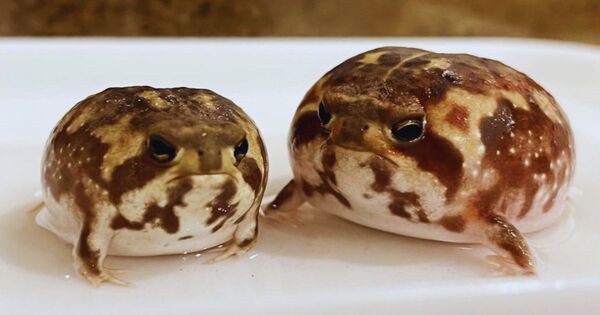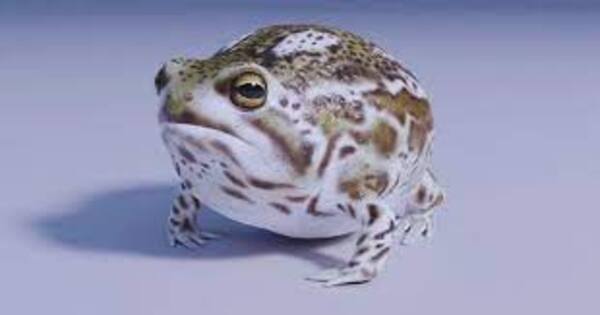The desert rain frog (Breviceps macrops) has become an increasingly popular choice for exotic pet owners due to its unique appearance and relatively low maintenance. This small amphibian, native to the deserts of southern Africa, is known for its adorable, round body and its signature squeaky sound. In this article, we will explore everything you need to know about owning a desert rain frog as a pet, including care tips, habitat setup, diet, and more. Whether you are a first-time pet owner or an experienced amphibian enthusiast, this guide will help you ensure your frog's well-being and happiness.

The desert rain frog is a small, burrowing amphibian that can be found in the arid regions of southern Africa, particularly in Namibia and South Africa. It is recognized for its distinctive, plump, translucent skin and its ability to produce a unique squeaky noise when threatened.
Size: Desert rain frogs are relatively small, typically growing to about 2 inches (5 cm) in length.
Color: They have a pale, creamy or light brown color, which helps them blend in with the sandy desert environment.
Round Body: One of the most striking features of the desert rain frog is its round, puffed-up appearance, making it look almost like a miniature balloon.
Desert rain frogs make great pets for those interested in exotic amphibians. They are not only unique and adorable but also relatively low-maintenance compared to other types of frogs. Their size and behavior make them ideal for pet owners who live in apartments or small spaces.
Low Maintenance: Unlike many other pets, desert rain frogs do not require daily attention. They are quite independent and spend most of their time burrowed underground.
Low Cost: They are affordable pets to keep in terms of food and habitat setup.
Quiet and Calm: Desert rain frogs are quiet pets, and their squeaky vocalization is more of an occasional occurrence rather than a constant sound.
Not Ideal for Handling: These frogs are not very fond of being handled. They are best observed rather than touched regularly.
Temperature Sensitivity: Despite their desert origins, desert rain frogs still require a controlled environment to thrive.
Caring for a desert rain frog is relatively simple, but it does require attention to detail, especially when it comes to its habitat, moisture needs, and diet.
Enclosure: A 10- to 20-gallon tank is sufficient for one or two desert rain frogs. The enclosure should be well-ventilated and have a secure lid to prevent escapes.
Substrate: Use a mix of sand and soil to mimic their natural desert environment. It should be deep enough to allow the frog to burrow, which is essential for their well-being.
Temperature: Maintain a temperature range between 70-85°F (21-29°C). You may need a heat lamp to achieve the desired temperature, especially during colder months.
Humidity: Desert rain frogs need a moderate level of humidity. While they are desert dwellers, they still require moisture to stay hydrated. A light misting of water in the enclosure can help maintain humidity without over-wetting the substrate.
Desert rain frogs are nocturnal, so they do not need excessive lighting. However, it’s a good idea to provide a regular light cycle, with around 12 hours of light and 12 hours of darkness, to mimic their natural environment.
As an insectivore, the desert rain frog's diet mainly consists of small insects, such as crickets, mealworms, and fruit flies. It is crucial to provide a balanced diet to ensure the frog’s health and vitality.
Insects: Feed your frog small, appropriately sized live insects. Dust them with a calcium supplement to help prevent metabolic bone disease.
Water: Always provide fresh, dechlorinated water in a shallow dish. Frogs will drink directly from the water or absorb moisture through their skin.
Frequency: Juvenile frogs may need to be fed daily, while adult frogs can be fed 2-3 times per week.

Desert rain frogs are known for their unique behavior and docile nature. They are primarily nocturnal and spend most of their time hiding in burrows during the day to avoid the heat of the desert.
One of the most interesting behaviors of the desert rain frog is its squeaky vocalization, which sounds much like a small toy or rubber squeaker. This sound is produced when the frog feels threatened or disturbed.
These frogs are burrowers, creating small tunnels in the substrate. Providing a deep enough substrate is essential, as it allows them to create these burrows and hide when they feel stressed or uncomfortable.
Like any pet, desert rain frogs can encounter health issues if not cared for properly. Here are some common health concerns to be aware of:
While desert rain frogs are accustomed to dry conditions, they still require moisture to survive. Dehydration can occur if the humidity level is too low, leading to skin shedding issues and lethargy.
Parasites, such as mites or worms, can sometimes infest frogs if they are not kept in a clean environment. Regular cleaning of the tank and feeding from reputable sources can help minimize this risk.
Skin infections can occur if the frog's skin becomes damaged or if the enclosure is too dirty. Keeping the habitat clean and maintaining the proper humidity levels can prevent infections.
Breeding desert rain frogs in captivity is rare but not impossible. If you’re interested in breeding these frogs, you’ll need to create a breeding-friendly environment.
Temperature & Humidity: A slight increase in humidity and temperature can trigger the breeding season. Provide a small, shallow water dish for the frogs to mate in.
Froglet Care: If breeding is successful, the eggs will hatch into tadpoles. These tadpoles will require a separate tank with water and a gentle filter until they mature into adult frogs.
Currently, desert rain frogs are not considered endangered. However, habitat loss and the pet trade have placed some pressure on their populations. It is essential to purchase desert rain frogs from reputable breeders who ensure their frogs are ethically sourced and not taken from the wild.
Desert rain frogs make unique and fascinating pets that are relatively easy to care for, making them an excellent choice for enthusiasts of exotic pets. With their quirky appearance and calm demeanor, they offer a rewarding pet experience for those who are willing to provide them with the right care. However, due to their specific needs, such as humidity control, burrowing space, and a specialized diet, potential owners should ensure they are ready to meet these requirements before bringing one of these adorable creatures into their home.
If you're interested in exotic pets and are looking for a low-maintenance but captivating amphibian, a desert rain frog could be the perfect choice for you.
animal tags: desert-rain-frog
We created this article in conjunction with AI technology, then made sure it was fact-checked and edited by a Animals Top editor.